Tutorial: Loading Data Using the API
This tutorial demonstrates how to load sample data into the Device42 Main Appliance (MA) using the Device42 API. You don't need prior programming knowledge, only the ability to execute a bash script of curl commands from the command prompt.
To run the script, you need a *nix system with curl, a data transfer tool built into Linux and Ubuntu.
Running the API Script
-
Download the API script from the Device42 automation scripts page on GitHub.

-
Open the script in a text editor, like Windows Notepad or Ubuntu Gedit. Don't use a word processor like Microsoft Word.
-
Add your credentials to lines 2-4 of the script. Replace
https://IPwith your Device42 IP address or FQDN, and supply yourusernameandpassword:URL=https://IP
USER='username'
PASS='password' -
Open a Linux terminal and run the script by typing
shfollowed by the path and file name of the script. For example:$ sh /tmp/demo_script.shYou will see information displayed in the terminal as the script executes and each curl statement outputs a success message.
-
Log in to your Device42 MA.
Running the script adds sample data to your MA, including a building, two rooms, six vendors, four racks, seven devices, and three customers. Depending on your settings, you may see statistics for these additions on your dashboard. Some data isn't displayed in the dashboard but can be found by browsing the system (for example, data concerning custom keys and value pairs).
You can view data added for an object category by navigating to the relevant list page from the main menu. For example, if you go to Resources > All Devices, you'll see the newly created records with names beginning with nh-demo.
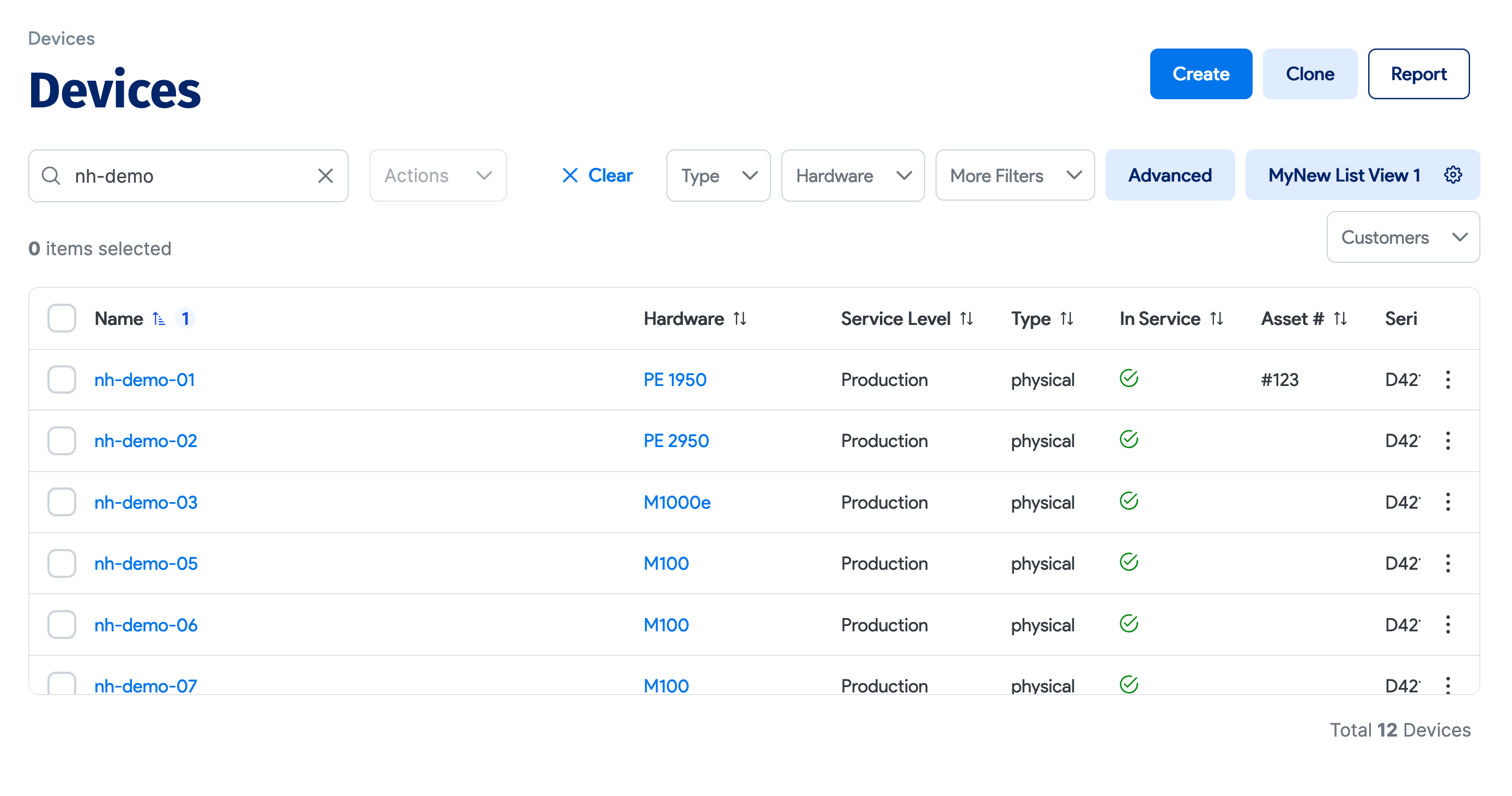
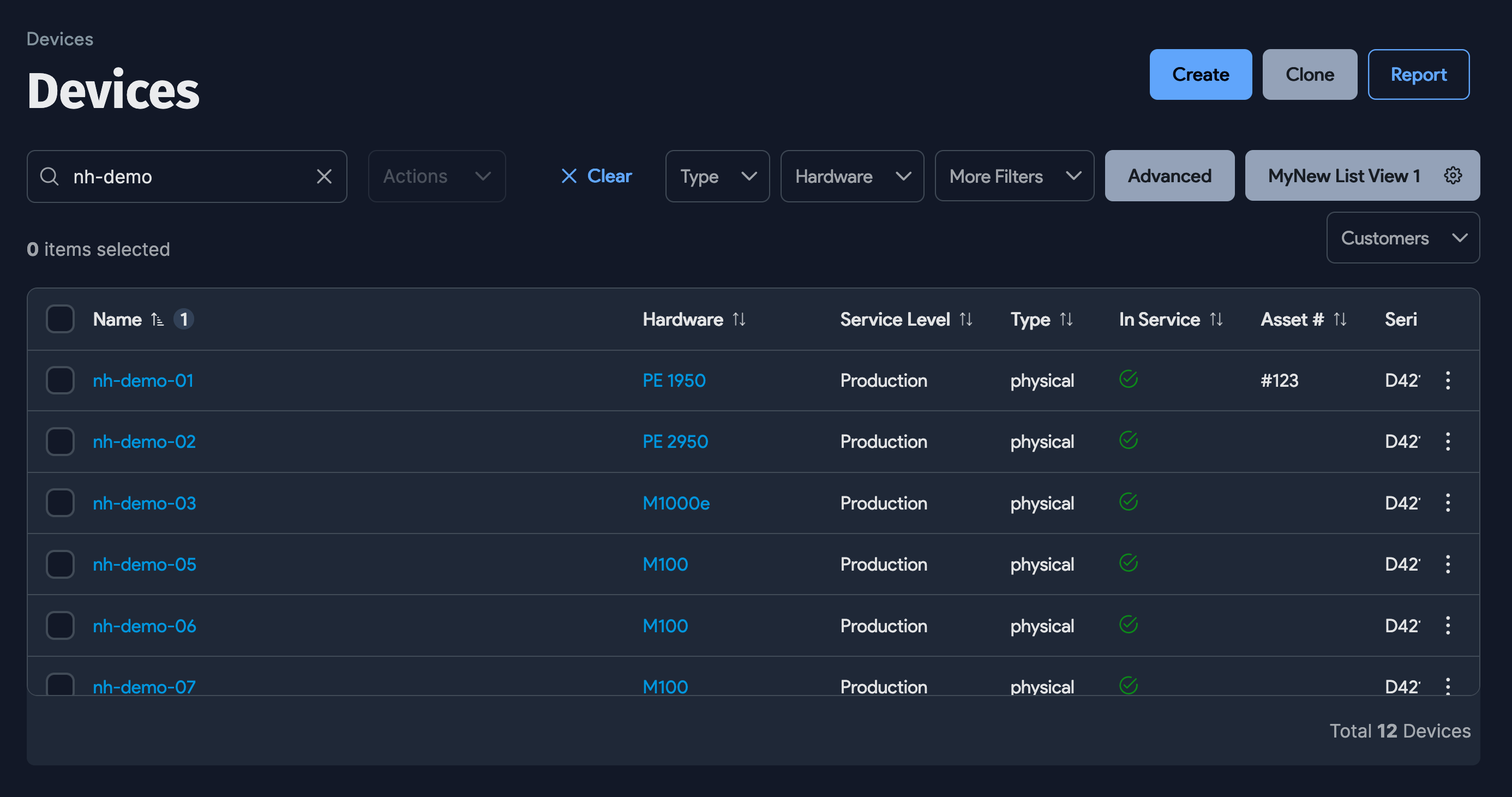
Understanding the API Script
Now, let's look at one of the curl statements you just executed. If you are sure that you will never use curl and the Device42 API, you can safely skip this section.
Each line in the script has a curl statement like the one below.
Click to expand the code block
#Add a Building
curl -i -H "Accept: application/json" \
-X POST \
-d "name=New Haven DC" \
-d "address=123 main st" \
-d "contact_name=roger" \
-d "contact_phone=1234567890" \
-d "notes=super critical" \
-u $USER:$PASS \
$URL/api/1.0/buildings/ \
--insecure
The -i, -H, and --insecure parameters should be in all Device42 API calls:
- The
-iflag specifies that the header should be included in the output. - The
-Hflag tells the Device42 application that a JSON-formatted response will be accepted. - The
--insecureflag is required because the Device42 appliance does not have a certificate.
The values of the following flags and variables vary depending on the API used:
- The
-Xvalue specifies the HTTP method used. - The
-dvalues are object category parameters. For example, a building has theaddress=parameter as an optional fillable field. - The
URLvalue is the API endpoint. For example,/api/1.0/buildings/is the endpoint for the building object category.
Watch our videos for guided examples of how to use API imports to create hardware models or add devices to racks.
The API Documentation
The Device42 API website serves as a resource for information about the API endpoint needed to get data to and from Device42.
The documentation for the above API command tells you that the -X value should be POST and the URL endpoint is /api/1.0/buildings/. Under the Parameters section, you can see that a name value is required and that address is an option.
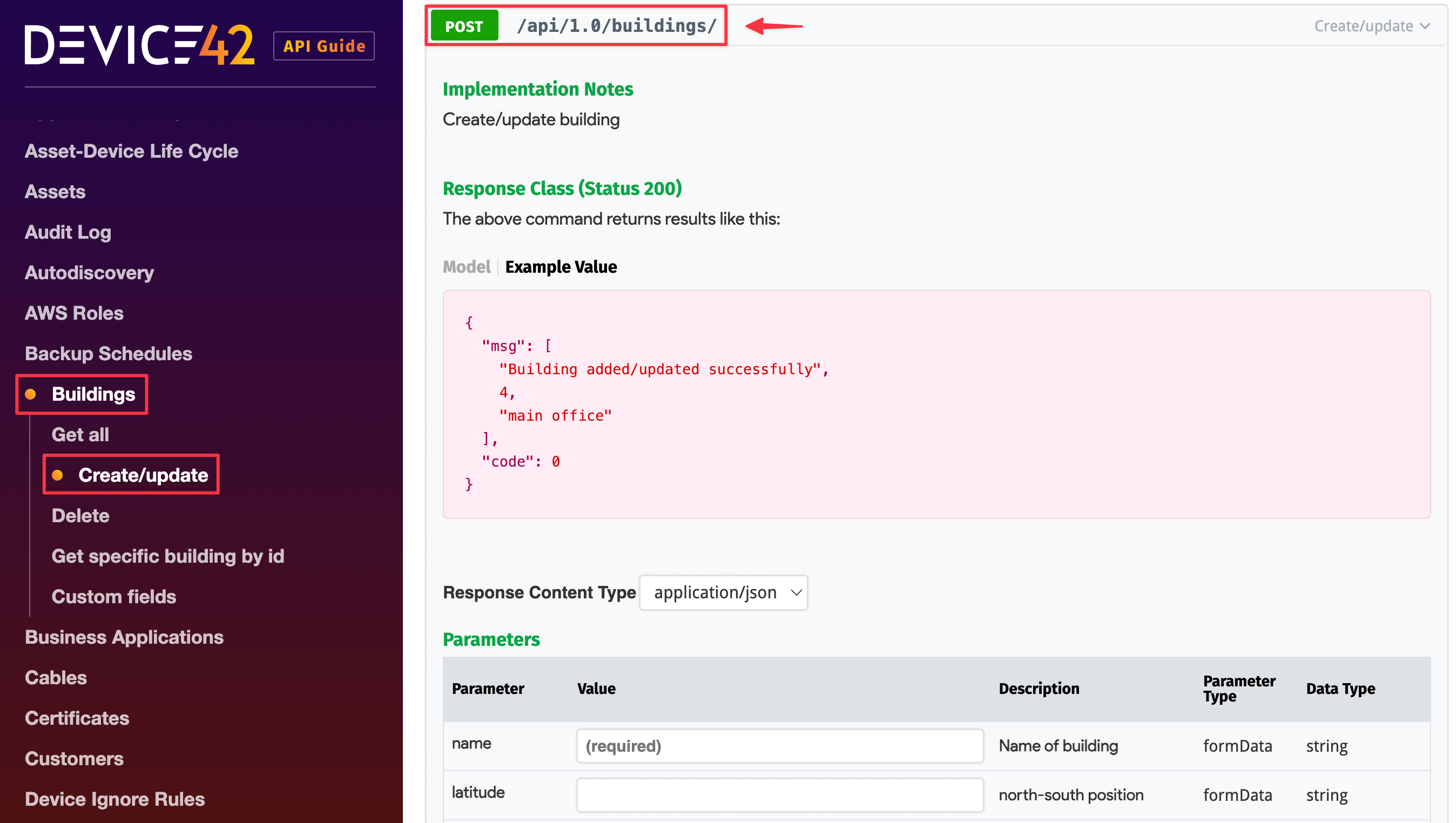
Finding Unique IDs
Some API parameters use the unique IDs of other Configuration Items (CIs). For example, if you create a rack and want to specify the room where the rack is stored, you can find the unique ID for that room. This is especially useful if you have multiple rooms with the same name and want to specify one of them.
The following screenshot shows the documentation for the Create/update racks API, highlighting the optional room_id parameter.
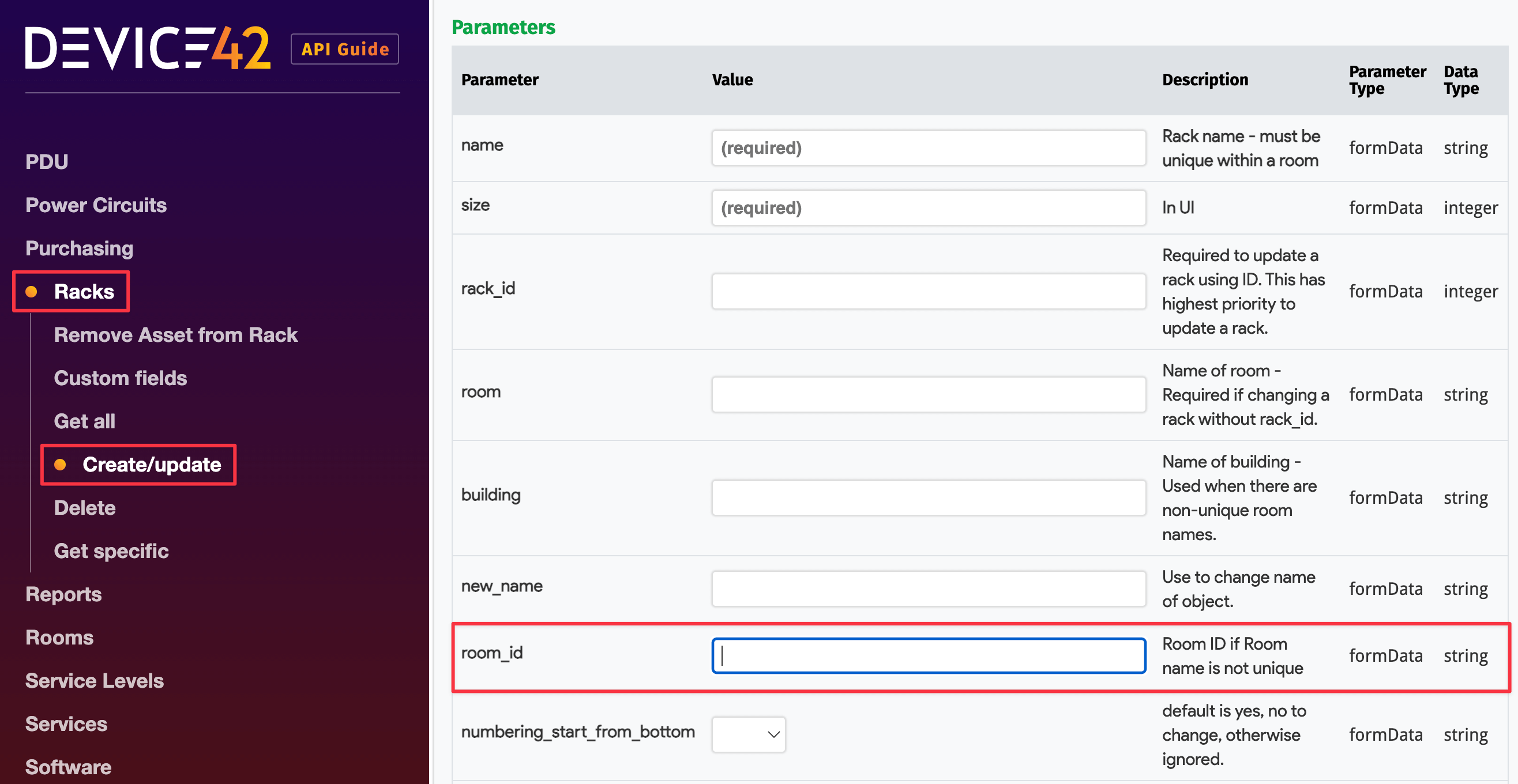
-
You can use the endpoint for the object (for example,
/api.1.0/rooms/) to get it programmatically. This method is most appropriate for a more complex program written in Java or Python. -
If executing curl commands in a shell script, you can open the MA, go to Infrastructure > DataCenter > Rooms, and hover over a room name to view its URL in the lower left corner of your screen. The last number in the URL is the unique ID.
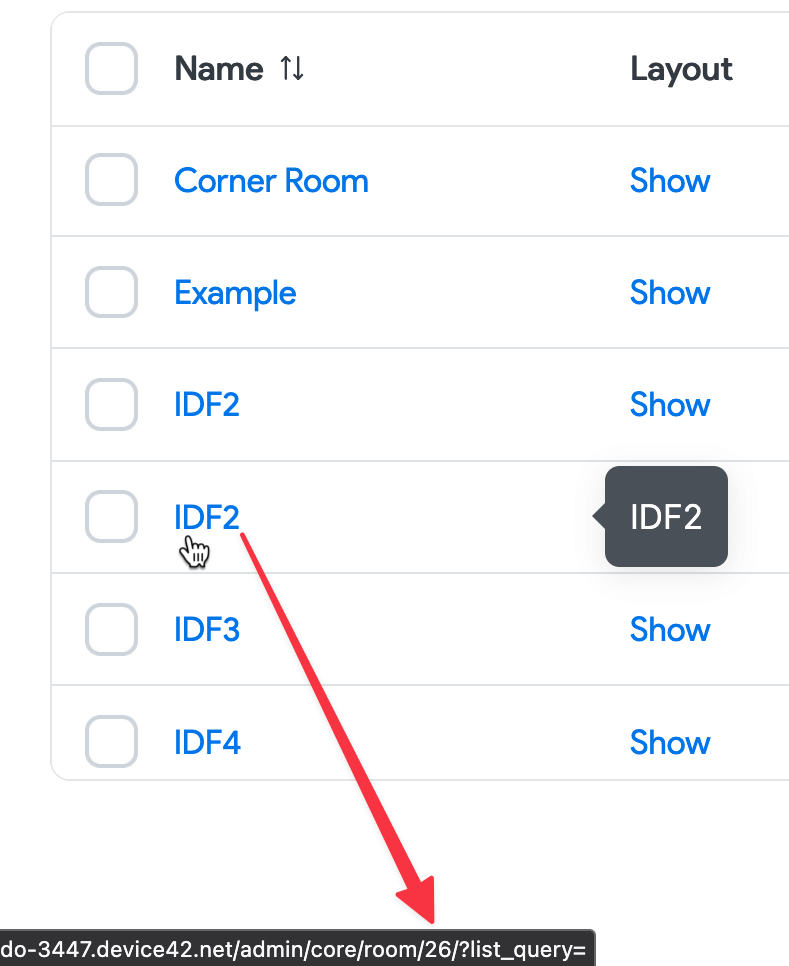
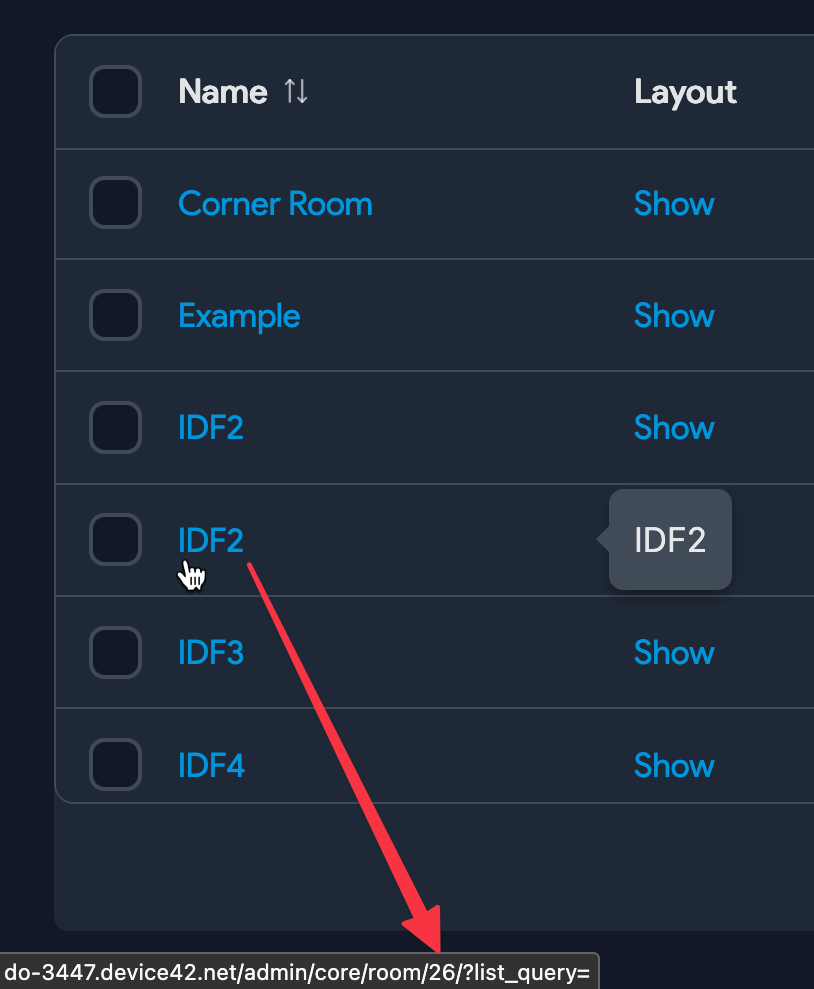
For example, if you hover over the DF2 hyperlink, you'll see that the last number in the URL is
26. This is its unique ID.
Next Steps
Next, we encourage you to follow the Device42 UI tutorial. Browse through the documentation for more detailed information on the various Device42 features.